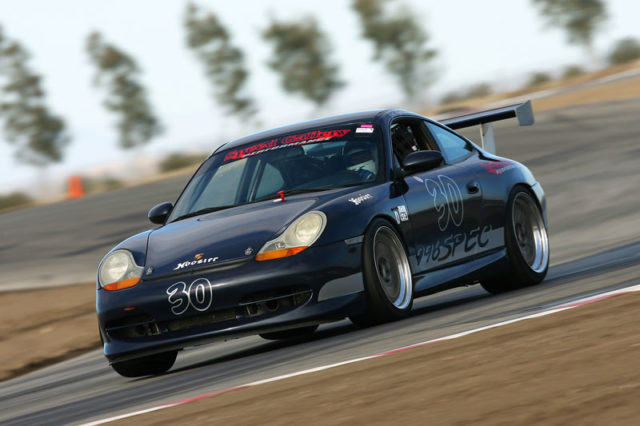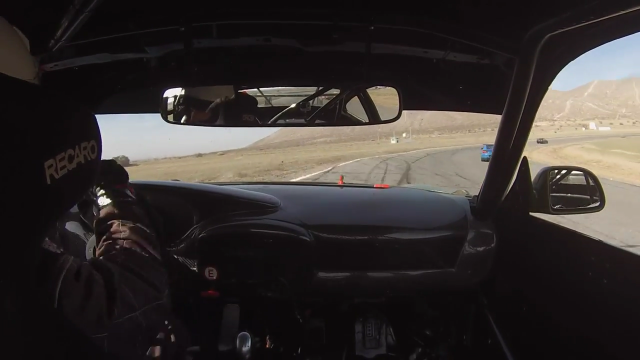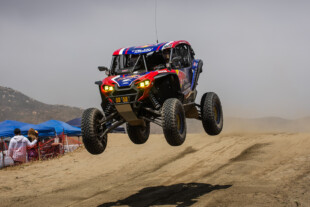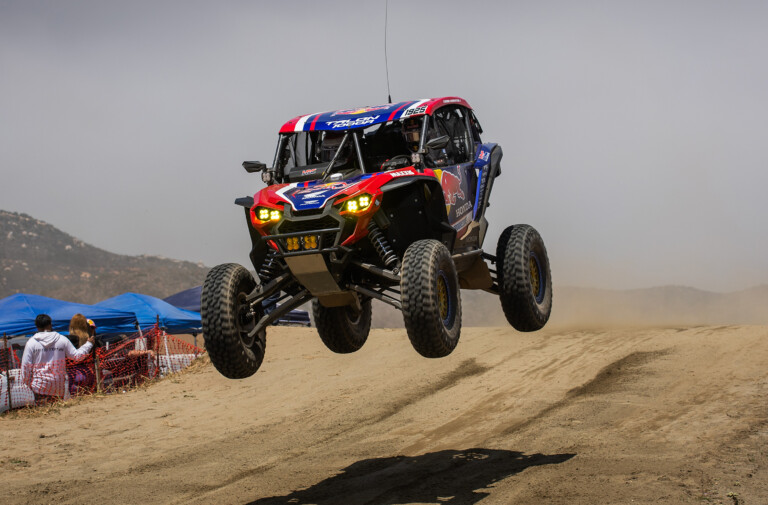Club racing usually doesn’t offer the winners much prize money, but that doesn’t stop some drivers from putting it on the line. For that reason, and perhaps because the standards of machinery aren’t as high, it is just as dangerous as the major leagues, if not more so. Especially when dicing at a track like Willow Springs, where safety standards are, shall we say, antiquated. With the long straights and harrowing, high-speed corners, there are plenty of ways to get it wrong.
Compounding the potential for danger is the tail-happy Spec 996 taking center stage in this clip. For those who are a little tired of a Spec Miata, a Spec E30, or a Spec Boxster, there’s always the chance to race a genuine 911 for relatively little. Relatively is used loosely here, but with 996-generation Carreras going for as little as $12,000 on Craigslist these days, a 300-horsepower, 2,900-pound racing Porsche can be enjoyed by middle-class motorsports enthusiasts, assuming they’ve got the needed car control.

For less than $30,000 with minimal modifications, a competitive 996 racecar can be had – just a few notches shy of a purpose-built GT3 Cup.
To keep racing close and prices reasonably low, the Spec 996 must adhere to a near-stock format. Allowed modifications include GT3 A-arms, a Sachs clutch kit, JRZ coilovers, and some mild drop links, toe links, sway bars, and a few other odds and ends. Essentially, the Spec 996 is as bare-bones as it gets, and is not many steps away from a gutted, caged, former-road car with the needed stiffening to perform well on-track. Addition, the rear tires are limited to 285-sections, so it’s still easy to get them spinning, especially with the torque on offer from the 3.6-liter motor available in the 996 Mk2.
When the tires have been heat-cycled one too many times, that propensity to spin grows even larger. With 911s, a major mid-corner throttle correction can prove disastrous, and we can hear this driver hopping on and off the throttle to trim his line at 1:47, when the rear end begins to go.
Though he does a good job of catching the slide, he’s thrown onto the marbles as the rear end oscillates, and no amount of throttle will help it stick. A snap ensues, and at those speeds, a big moment becomes near-impossible to save. Once he’s off the track, he’s simply along for the ride.
It’s strange how hustling on-track at triple-digit speeds can seem almost casual, though when that same car is both careening wildly and decelerating towards a wall, the speed seems to magnify three times. With a sickening thud, the Porsche’s nose bobs up towards the sky and the driver groans with five broken vertebrae.
Though the car is well-built, there’s no getting away from a poor infrastructure. With such a terrible incident happening so casually, it forces one to pause. How can a modern, high-speed circuit not have any tire barriers in the most dangerous sections?






















